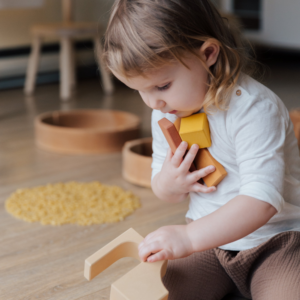Are you wondering about setting goals for your kids? This blog post is for you.
DISCLOSURE This post may contain affiliate links, meaning if you decide to make a purchase via my links, I will earn a commission at no extra cost to you. As an Amazon Associate I earn from qualifying purchases. Thank you for your support.
Disclaimer: The information provided in this blog post is for educational purposes only and should not be used as a substitute for professional medical advice, diagnosis, or treatment. Always seek the guidance of your pediatrician or qualified healthcare provider with any questions you may have regarding your child’s health. If you think your child may have a medical emergency, call your doctor or emergency services immediately. Read our full Medical Disclaimer here.
As devoted parents, we are naturally drawn to enhancing our kids’ lives and putting them on the path to success. Many parents automatically maximize participation when it comes to enrolling their children in sports teams, music lessons, or rigorous academic schedules, believing that “more is better” in terms of skill development. But studies on childhood development show that when it comes to early childhood activities, quality matters more than number. Families would better serve their children by emphasizing realistic goal-setting that fosters intrinsic desire and accountability, as opposed to jam-packing schedules with activities.
You might also want to check out our post on how to promote independent learning and why is independent play important.
Here are 7 strategies for Setting Goals for Kids:
1. Define Goals and Rewards
Ask them to explain why they think a certain objective or activity is important to them personally and how learning it will improve their lives. Internal motivation and tenacity are significantly more strongly fueled by learning new abilities because one enjoys the process intrinsically than by external pressure to succeed. Aid children in understanding the important “why” behind objectives.

2. Setting Goals for Kids: Divide Objectives Into Smaller Phases
The accumulation of small victories over time leads to major achievements. Whether the goal is to save money for a desired gadget, read a book series, or master a dance technique, keep your kids motivated by highlighting their tiny victories along the way. Reward little accomplishments on a regular basis.
Check the “clipboard system” this mom of 8 uses.

3. Plan Your Time Considering Energy and Obligations
Establishing routines gives steadiness for achieving goals, but strict overscheduling causes unhealthful stress that stunts growth. Depending on the age and temperament of the children, make sure they have enough unstructured downtime for family time, free play, and just restorative sleep. Adjust timetables to allow for flexibility if needed.

4. Setting Goals for Kids: Value Persistent Work Above Perfection
Traditionally, parents and coaches have placed more emphasis on stability in advancement than on constant pressure to deliver children their “best” performances. However, studies suggest that consistently putting in your best effort increases resilience over time more than categorizing performance as pass or fail. Give praise for a methodical approach to routine rather than expecting perfect results every time.

5. Permit A Little Difficulty in the Process
When kids encounter unavoidable challenges when pursuing objectives like learning how to ride a bike or become proficient in math, encourage them to keep trying instead of providing a quick fix. While overcoming obstacles on one’s own develops confidence, enduring some difficulty teaches patience and resilience.

6. Concentrate Feedback on Manageable Steps
Positive criticism focuses on the areas that kids can particularly manage. Instead of making general judgments about performance, such as “you didn’t win,” which might sap motivation, make specific comments about effort, like “your extra practice really shows!” or “you worked hard for this, that is why you were able to do it!” This serves to teach children that consistent effort pays off, and that hard work is directly linked to positive achievement.

7. Demonstrate self-reliance and a growth mindset
Youngsters see and internalize the attitudes, routines, and actions that are regularly displayed around them. Openly discuss your own goal-process, striking a balance between perseverance, rejuvenation, and adaptability in the face of failures. Tell tales of mentors who demonstrated tenacity in the face of adversity. Children’s abilities and ambitions change, but their self-confidence endures because they are focused on the one area in which they DO have power: their hard work.

Conclusion
This post was all about setting goals for kids. Instead of evaluating performance outcomes, approach goal-setting in early education from an empowering perspective of maximizing potential. Keep your expectations in check and be cognizant of each person’s individual requirements and tendencies. Through the intrinsic learning journey, provide scaffolded, graded steps that nurture accountability while balancing it with caring assistance.
To recap:
- Ask why goals matter to them. Kids try harder at things they find fun and enjoy. Help them see why activities help their life.
- Break big goals into smaller steps. Big goals, like reading a whole series of books, happen little bit by little bit. Celebrate small wins towards the bigger goal.
- Make sure kids have free time too. Being busy all the time leads to unhealthy stress at young ages. Make sure they have play time, family time, and rest time built into schedules too.
- Encourage effort most. Judging pass or fail on each tryout, game, or practice is hard on kids. Praise them for hard work and showing up ready to try.
- Let them struggle some. When they are learning new skills like bike riding or math facts, let them try working through problems first before helping. This builds confidence.
- Give feedback on things in their control. Like how practicing more helps their dance move or throw. This helps them connect effort and results.
- Show kids your goals too. Talk about when you try hard towards a goal or have a setback. Help them know skills and self-confidence can keep growing in life.
You’ve got this!







Leave a Reply